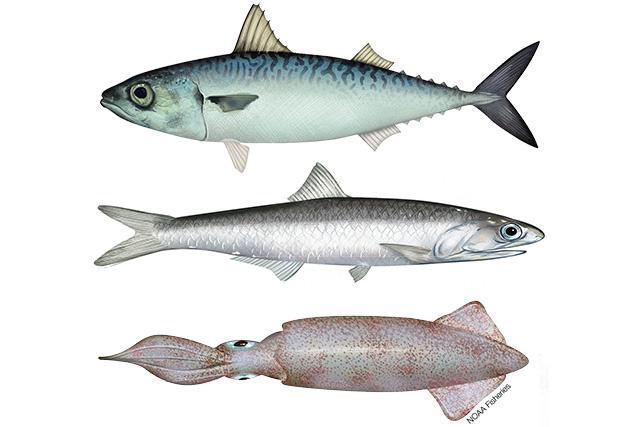Part 8: Assessing the Health of a Fishery: Fishery Activities
Stock Assessment Based on Catch-per-Unit Effort
One of the simplest stock assessment methods – catch-per-unit effort – requires almost no knowledge about the biology of the stock, but instead relies on information about fishery activities. It uses what is called fishery-dependent data, where the information is gathered from the fishers. In this type of assessment, the manager looks at two things: the history of landings for the stock and the effort expended to catch the stock. The key information here is knowing the amount of effort it takes to make the landings. Landings data (the amount of fish caught and landed per year) alone are not very useful. Landings can fluctuate for a variety of reasons. A trend of decreased landings may be a cause for concern, but the amount of effort made by fishers to catch the stock tells the real story.
In order to account for effort, fishery biologists tally the number of vessels used and the time it takes to make those landings. The biologists divide the yearly landings by the fishing effort to calculate the catch-per-unit effort (CPUE). For example, 3,000,000 pounds of shrimp caught by 6,000 vessel-days of effort gives a catch-per-unit effort of 500 pounds per vessel-day. The catch-per-unit effort is directly related to the amount of fish in the stock. For example if it took 10,000 vessel-days of effort to catch 3,000,000 pounds of shrimp, that would result in a CPUE of mean 300 pounds per vessel-day, a much lower harvest. A decline in CPUE usually indicates a decline in the stock.
Fishery Biologist Terms for Effort
Fishery biologists often express effort in different ways that may be foreign to fishermen. For example, “vessel-days” is an attempt to estimate the total days all vessels in the fishery actively fished. In a longline fishery, the effort might be called “hook-hours” where the number of hooks multiplied by the amount of time the hooks were in the water can be used to estimate effort.
Several fisheries have experienced a similar pattern in relation to the catch-per-unit effort. At the beginning of a new fishery, when people decide to start catching that stock, the catch is low and the catch-per-unit effort is high. As interest in the fishery grows, the effort increases, the catch increases and the catch-per-unit effort usually levels off or declines. Finally, as more effort is applied, the catch declines and the catch-per-unit effort declines even more as it becomes harder to find the fish. A decline in both the catch and the catch-per-unit effort indicates that the stock is probably overfished, meaning that too many fish are being removed for the stock to maintain itself. Landings will decline despite increasing the effort or vessel-days. The solution is to reduce fishing levels until the catch-per-unit effort returns to what it was in the earlier stages of the fishery.
This seems simple enough. But it can be difficult to assess when landings have declined despite an increase in effort. The reasons include:
- Insufficient landings data,
- Insufficient effort data, or
- Fishers using new technology that makes it hard to compare the effort today with the effort of several years ago.
Adequate landings data are often available; however, the effort data are usually missing, incomplete, or unusable. Another problem is that by the time there is a clear decline in catch-per-unit effort, stocks may be overfished, making it harder to rebuild. Modern fisheries management has moved away from using raw CPUE data in favor of robust models that still employ CPUE data but more adequately capture the variability associated with those data.
 West Coast Coastal Pelagic Species
West Coast Coastal Pelagic Species
Over-Capitalization Can Increase Fishing Effort
If fishing effort is too high, it usually means that there are too many boats in the fishery. Fishery managers call this over-capitalization. This means more money (capital) has been invested in boats than the fishery can support. Over-capitalization can also refer to when fishers increase fishing effort without increasing the number of boats. If each boat doubles its fishing power by carrying twice as much gear or using new technology (sonar, GPS, etc.), the new effort can have the same effect as doubling the number of boats and is also described as over-capitalization.
Studies have shown that both technology and an increased number of boats have led to overcapitalization in most fisheries worldwide. NOAA reported a 270% increase in technology in the last half of the 20th century, as well as double the number of vessels from 1970 (600,000 vessels) to 1992 (1.2 million vessels). Increased technology and more boats mean that it is easier to catch a fish, but harder to catch enough. This is labeled inefficiency. For example, in the Pacific region in the mid 1990s, it was estimated that there were 640 vessels participating in the coastal pelagic fishery. But just 41 vessels (6 percent) caught 95 percent of the fish. Before establishing a limited entry program, the Pacific FMC found that 75 vessels were all that was needed to catch “almost all of the [coastal pelagic finfish] likely to ever be available” (see page 29 of that document).
« Go to Part 7 | Part 8: Assessing the Health of a Fishery: Fishery Activities | Go to Part 9 »
